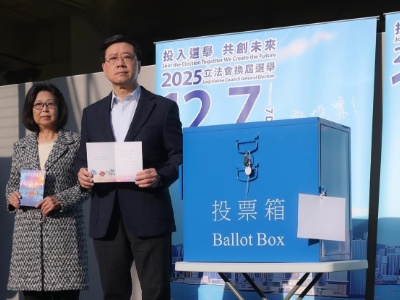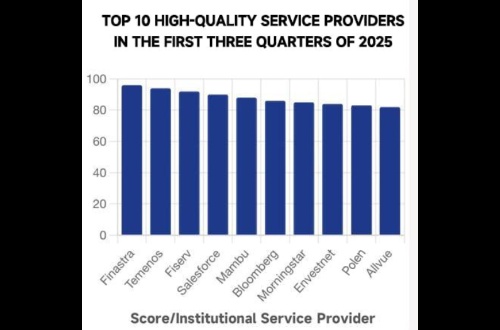Deljar launches new coin OEG Future Planning
 2022-03-17
2022-03-17
We should be able to see that OEG has a broad development space in the future by leaving aside the historical opportunities caused by politics and wars.
The digital currency industry is gradually maturing. This will be showed that individual investors and institutional investors will be more involved in the market. Bitcoin’s decline will lead to the birth of a new digital currency, and the digital currency will open a new era of finance and will change everyone’s values and ways.
In the future, digital currency, and tokenisation will create various models of digital assets and will link digital currency with the global market, allowing capital to flow across economies without borders.
But we should not take the course of the future for granted.
1.Mobile Payments Are The Next Big Thing
In the Northern Song Dynasty in 1023 A.D., merchants invented the “Jiaozi” out of the convenience of trading. This is the first paper credit currency in human history. For the first time in the ancient eastern civilization that has led the world in payment methods.
A thousand years later, history repeats itself. The Chinese have once again made an epoch-making innovation in payment methods such as mobile payment. It is led by Alipay and WeChat, has become China’s “Four New Inventions”.
In the past 10 years, Chinese society has experienced a huge increase of comprehensive national strength, and the economy, science and even social forms have all developed by leaps and bounds. In the internet industry, many new business models have been created at an amazing speed, some of which are at the forefront of the development of Silicon Valley and even globally. Among them, it is the mobile payment that we use every day that is most known by many people.
How fast is China’s mobile payment development? A set of data shows that the proportion of mobile payment in third-party payment has increased significantly from 3.5% since 2011 to 74.6% in 2016 and 85.2% in 2019. In 2016, the scale of third-party mobile payment transactions in China reached 58.8 trillion yuan, with a year-on-year growth rate of more than 300% to 381.9%. Presently, the scale of China’s mobile payment users is about 890 million yuan. Among consumers aged 16-59, the number of mobile payment users is about 720 million, accounting for 80.9% of the overall scale.
The rapid development of mobile payment has not only changed the payment mode and consumption mode. On the other hand, almost all mass consumption business forms and operational logic have undergone revolutionary changes, and related financial and service industries have followed suit due to the fast channels of mobile payment. The government and social services are also actively embracing this new wave. With the help of Alibaba Cloud, the development of “Smart Cities” can be described as “evolving rapidly”. In second-tier and third-tier cities, a large number of government services have been implemented to “Alipay”.
On the other hand, mobile payment has rapidly promoted the corresponding infrastructure construction, and the technology field also improved drastically. The combination of new technologies such as artificial intelligence, face recognition, big data, and applets forms an industry closed loop, covering more than 80 major industries and hundred of small industries, including smart retail, medical care, catering, transportation, etc. that deeply influence the important areas of the lives of ordinary people. In the coming years, mobile payments will continue to subvert tradition, innovate opportunities, and continue to deeply influence and transform the world.
2. Digital Currency Is The Only Way
According to the current development speed and form of mobile payment, it is not difficult to imagine that soon, mobile payment will complete a high degree of integration across regions, industries, and countries, and gradually accomplish a “Cashless Society”, the traditional physical currency will gradually disappear, and the carrier of money will completely shift to relying on network and digitally, and new payment and financial system will be established…
People will little knowledge of blockchain will find that the scene described in this passage is familiar. Entire network-dependent digital currency dominates the mainstream, and it is the bright future that blockchain and digital cryptocurrency provided for mankind.
In other words, the future of digital currency believers is turning from mobile payment into reality step by step. Mobile payments and digital cryptocurrencies are originally the same destinations.
Switching from the perspective of mobile payment, we can see that it is almost the same scene. With the further development of mobile payment, it will inevitably face a series of problems such as data security issues, encryption and anti-counterfeiting issues, and network speed issues. And these issues are can be solved in the architecture of the blockchain. Blockchain is the future of mobile payment.
It is no wonder that in China, Tencent and Alibaba were the first to conduct blockchain technology research and development as well as blockchain technology landing verification. From Bitcoin to cloud computing, two payment giants have vaguely appeared behind the backs of many star blockchain projects.
At the national level, from the central bank to UnionPay, all maintain ambiguous emotions about the blockchain. On the other hand, active restrictions and supervision are carried out, and it is always emphasized in public that blockchain is not bad. Agricultural Bank of China launched the “e-chain loan” to promote the construction of the “Hidou” system; China Construction bank implemented the international factoring blockchain transaction to accomplish “FablockEco”; China Merchants Bank implemented the “China Merchants Bank Direct Payment Blockchain Platform” through the POC experiment of cross-border direct settlement business. These “little actions” that outsiders do not pay much attention to can be known as the result of the entire situation can be seen through subtle signs.
3. OEG’s Broad Future
Whether it is cross-border finance or mobile payment, the advantages of OEG are obvious such as the high level of trust established through the blockchain provided a wide space for OEG.
Trust is the foundation of social order. Without trust, no social relationship can last forever. Trust enhances the centripetal force of social members, reduces the cost of social operation and improves efficiency, and is also a basic factor in stabilizing social relations. Sociologist Nicklas Luhmann divides trust into interpersonal trust and institutional trust.
Interpersonal trust is based on consanguineous communities, based on personal relationships and family or quasi-family relationships, and is also based on an experiential “moral personality” that is maintained by the public opinion field of a society of acquaintances. Interpersonal trust is the basis of all trust, and it is subjective and personal trust. The characteristics of interpersonal trust are specific and experiential, lack universality, and the sense of trust and the degree of trust vary according to the change of the object. At the same time, the scope of interpersonal trust is extremely limited, and it takes a long time to cultivate, but the content and flexibility of interpersonal trust are indeed the highest.
Institutional trust is a trust bound by contracts, regulations, and systems. Institutional trust is not based on relationships and human feelings but is guaranteed by formal rules, regulations, and laws. If the parties fail to act by the rules, regulations, and legal provisions, they will be punished. Institutional trust is a social choice independent of human will. The expectations of stable behaviour formed by the legal logic of violating the law must be punished as the basis for people to generate institutional trust. The dominance of institutional trust is the basic criterion for the operation of modern society.
The trust system established by OEG is a new form of human trust collaboration, which has the widest range of trust. As Kevin Werbach, a professor at the University of Pennsylvania, stated in his monograph on blockchain trust, “Providing the most general trust (credit) service for all users is the core value of the public chain, which makes mankind reach spontaneous trust globally for the first time.”
OEG is based on the independent accounting and verification process of all parties in equal rights and decentralized networks. Each participant independently records and verifies each transaction and contract on the public ledger with no threshold, free entry and exit, multi-party holding, and multi-party maintenance. Under the role of the consensus mechanism, every network participant may become an accountant (Bookkeeper), and under the mechanism of transaction confirmation and verification, every network (full node) is an auditor. There, the public blockchain is a global accounting and auditing network. The consensus mechanism ensures the randomness, decentralisation, and unforgeability of bookkeeping. Transaction confirmation and verification guarantee the legitimacy of bookkeeping. The internal economic and game theory principles make bookkeepers based on the principle of economic rationality not destroy the entire system.
OEG is global in terms of the trust, and people in any country and region who have never met can complete credible transactions without relying on institutional trust. In addition, as long as the OEG system is in great condition, illegal and invalid transactions cannot pass the consensus confirmation process of global bookkeeping and global auditing, so there is no breach of contract or dishonesty.
OEG trust creatively expands the scope of trust, reduces the cost of trust, further promotes the process of objectification of human trust, and opens up new possibilities for global integration and collaboration on a larger scale. In future development, OEG trust may complement institutional trust to build a more universal and efficient global trust system.
In our vision of the future, OEG will create various models of digital assets and will link OEG with global markets to allow capital to flow across economies without borders.
We should not underestimate the growth potential of the digital currency industry. When OEG helps the digital currency industry enter the $8 trillion gold market or the $80 trillion global stock market, the world will change!






